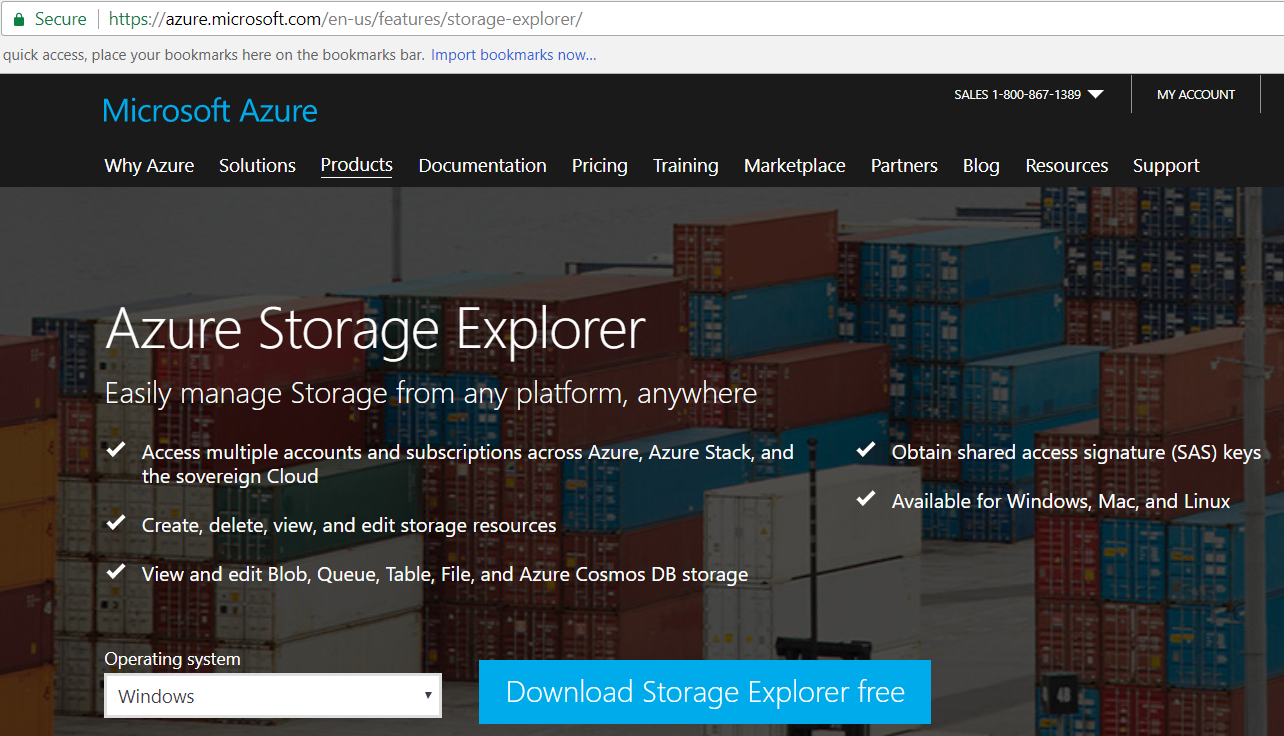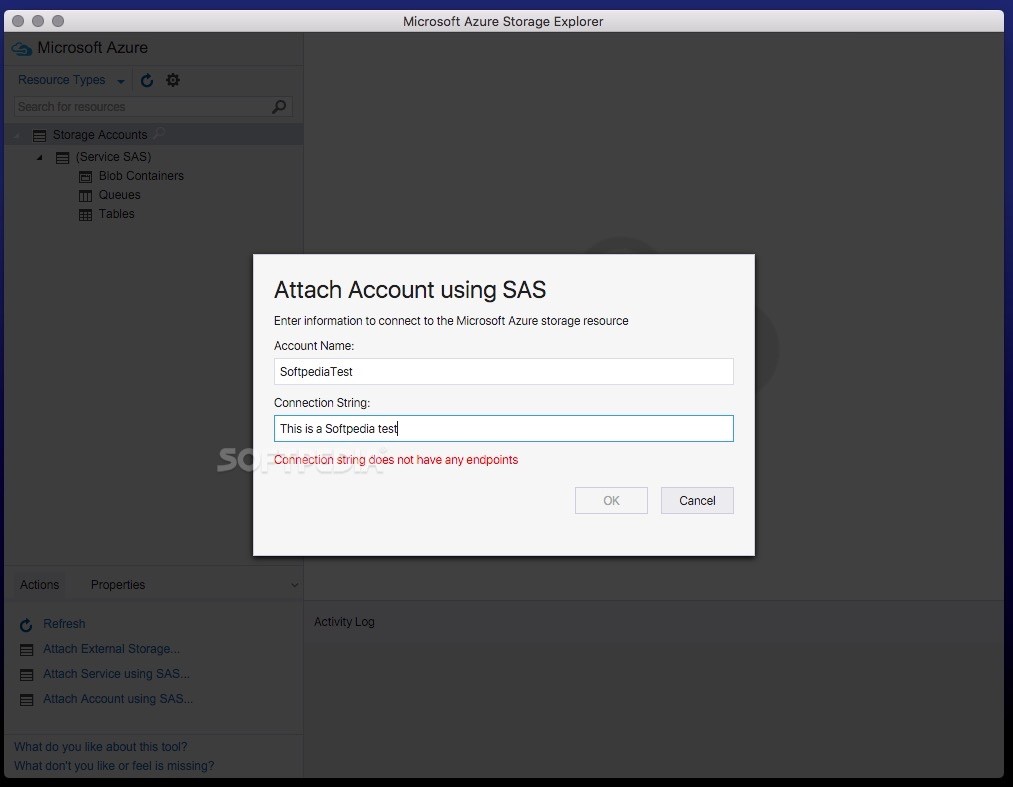

- #Azure data storage explorer install#
- #Azure data storage explorer download#
- #Azure data storage explorer free#
The table schema definition supports a number of scalar data types: Type The primary query language is the kusto query language, but a subset of T-SQL is also supported. With a dot and are used to manage the service, query information about it andĮxplore, create and alter tables. The Azure Data Explorer supports control and query commands to interact to_parquet ( filename ) for m in months : csv_to_parquet ( m )Įach csv file has about 700MiB, the parquet files about 180MiB and per file about 10 million rows. Like in the understanding parquet predicate pushdown blog post we are using the NY Taxi dataset for the tests because it has a reasonable size and some nice properties like different datatypes and includes some messy data (like all real world data engineering problems). Standard_D14_v2 servers with each 16 vCores, 112 GiB ram, 800 GiB SSD storage and a network bandwidth class extremely high (which corresponds to 8 NICs). Within my team at Blue Yonder we are always looking for managed, scalable/elastic queryĮngines on flat files beside the usual suspects like drill, hive, presto orįor the following tests I deployed a Azure Data Explorer cluster with two instances of With the heavy use of Apache Parquet datasets It also offers parquet support out of the box which made me spend some time to look into it. While it does not support fully elastic scaling, it at least allows to scale up and out a cluster via an API or the Azure portal to adapt to different workloads. The AzCopy will become the default transfer engine for all blob transfers, not only for managed disks.Last summer Microsoft has rebranded the Azure Kusto Query engine as Azure Data Explorer. Microsoft is currently translating the UI into different languages besides the default English. You can just upload from your local workstation, as the credentials are already preconfigured. You do not have to log in to the Azure portal each time you want to upload files to your blob. It creates and manages blobs, tables, and queues, generates SAS keys, and more.
#Azure data storage explorer free#
The free product is a standalone app so you can easily work with Azure Storage data from any platform, anywhere. However, you should know that egress charges might be incurred.
#Azure data storage explorer download#
These files are accessible through the SMB protocol, so you can think of this type of storage as a cheap extension of your on-prem datacenter's file server storage.Īs you can see, when the blob is selected, you have access to all sorts of operations such as Create a New Folder, Copy, Paste, Copy URL, Delete, Rename, and Create and Manage snapshots.įrom this menu, you can also download the files stored in Azure. You can store pretty much everything-images, video files, audio files, PDFs, and larger documents.įile Storage – Store your files (simply) in the cloud. It is very scalable and is used for text or binary data. Blob storage can be accessed like an external hard drive, and you can even store virtual hard drives in blog storage. Queue storage is easily accessible via HTTP/HTTPs method calls.īlob storage – Created for larger files in which you can store a huge capacity of data.

Queue storage – This type of storage is considered to be short-term, since the messages on queues have a lifespan of only 7 days. The main advantage here is the possibility of scaling when necessary. It's possible to access data using a clustered index. Table storage – Can store a large amount of structure data and allows you to store entities with name–value pairs. Storage Explorer supports different kinds of cloud storage Once your work in the local emulator is finished, you can switch to your online Azure account in the cloud.

The storage emulator can be installed as part of the SDK and allows you to test your development skills locally without the need of an online connection. The product can also emulate the online storage locally so you don't have to be connected. Storage Explorer is able to manage all of them.

What can you do with Storage Explorer?Īs you know, Azure provides different kinds of storage, including table, blob, queue, and file storage. This freeware is small in size, but large in features.
#Azure data storage explorer install#
You can download and install Azure Storage Explorer here. The Snap platform ensures all dependencies are installed when you chose to install the Storage Explorer software. Presence in Canonical Snapstore – It is much easier to be present within snapstore, so the installation and onboarding for Linux users is easier. You can also create snapshots of managed disks and copy, download, and delete your managed disks. When a VHD is uploaded to a managed disk, the new AzCopy v10 integration enables the quickest upload possible. Managed disk support – You can now create and manage VM disks using the Storage Explorer GUI.


 0 kommentar(er)
0 kommentar(er)
